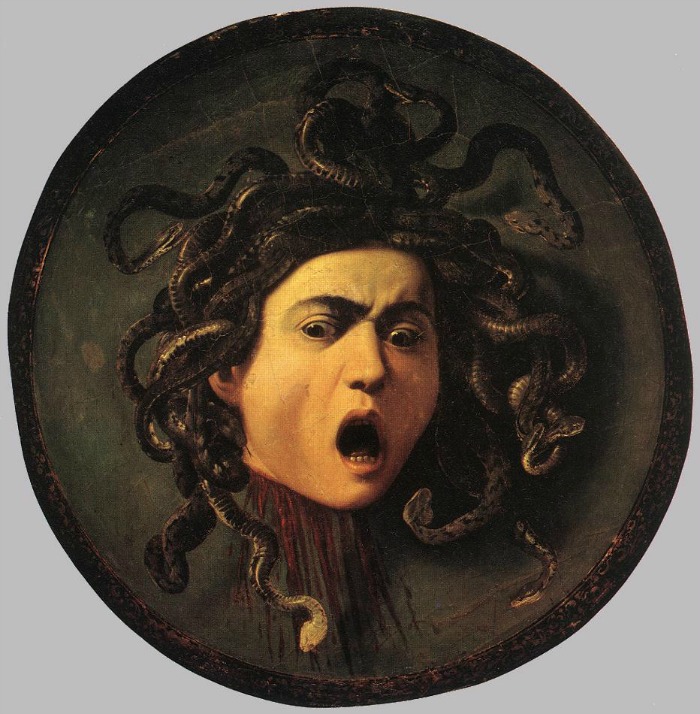Guess the Artwork

Scudo con Testa di Medusa - oil on canvas mounted on a convex wooden shield (diam.55)- 1597 - by Michelangelo Merisi da Caravaggio, Uffizi Gallery, Florence.
Caravaggio painted two versions of Medusa, one in 1596 and the second one presumably in 1597.
The first version is also known as Murtula, from Gaspare Murtola who wrote a poem about this: "Flee, for if your eyes are petrified in amazement, she will turn you to stone." While Murtula was signed Michel A F, an abbreviation for the latin Michel Angelo Fecit (Michel Angelo made this), the second version, shown here, is not signed. It was commissioned to the artist by Cardinal Francesco Maria del Monte and presented as a gift to Ferdinando I de' Medici. In the Medici Armoury at the Uffizi since 1631.
In Greek mythology a gorgon is a terrifying creature and Medusa was a gorgon with a mane of serpents in place of her hair. She was so repulsive that, whoever looked at her, supposedly turned to stone, as Murtola captured in his poem. Perseus, the Greek hero, was given a shield by the goddess Athena, so that he could avoid looking at her, as he decapitated her and saved Andromeda from the sea monster Cetus.
In Caravaggio’s painting, the creature is portrayed at the moment of self-recognition immediately after Perseus beheaded her. Caravaggio depicts the horror in her eyes as she sees her image refelected in the shield durign the last moments of consciousness. Caravaggio's Medusa shows an intense level of realism, the contrasts between light and shadows makes Medusa's face look three-dimensional and is a perfect example of the artist focus on physiognomic and ability to portrait the subject's soul through facial expression.



